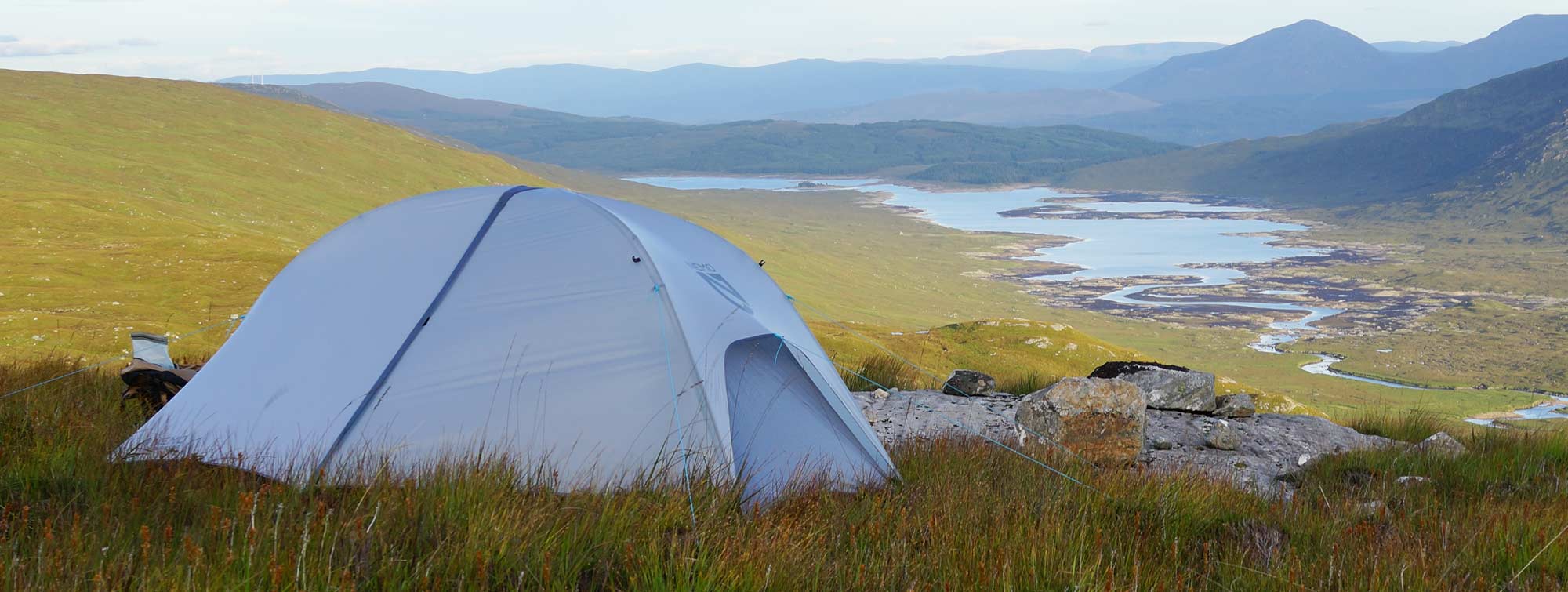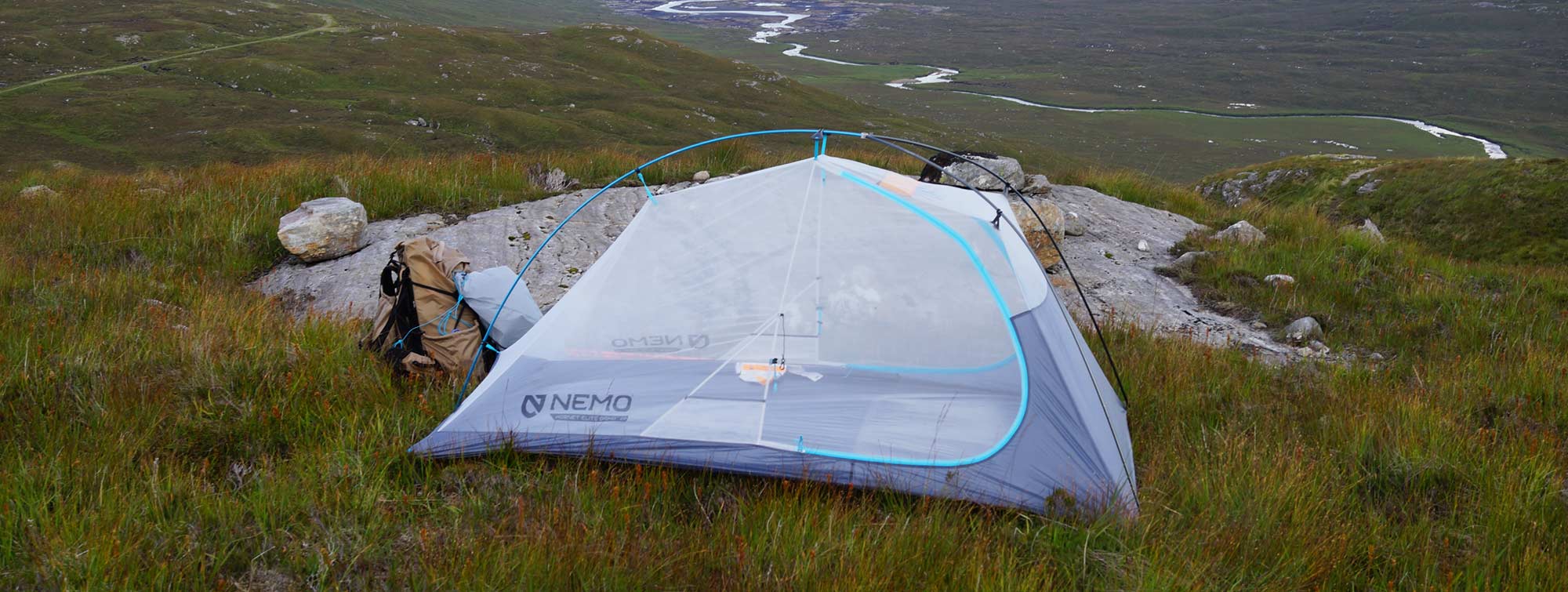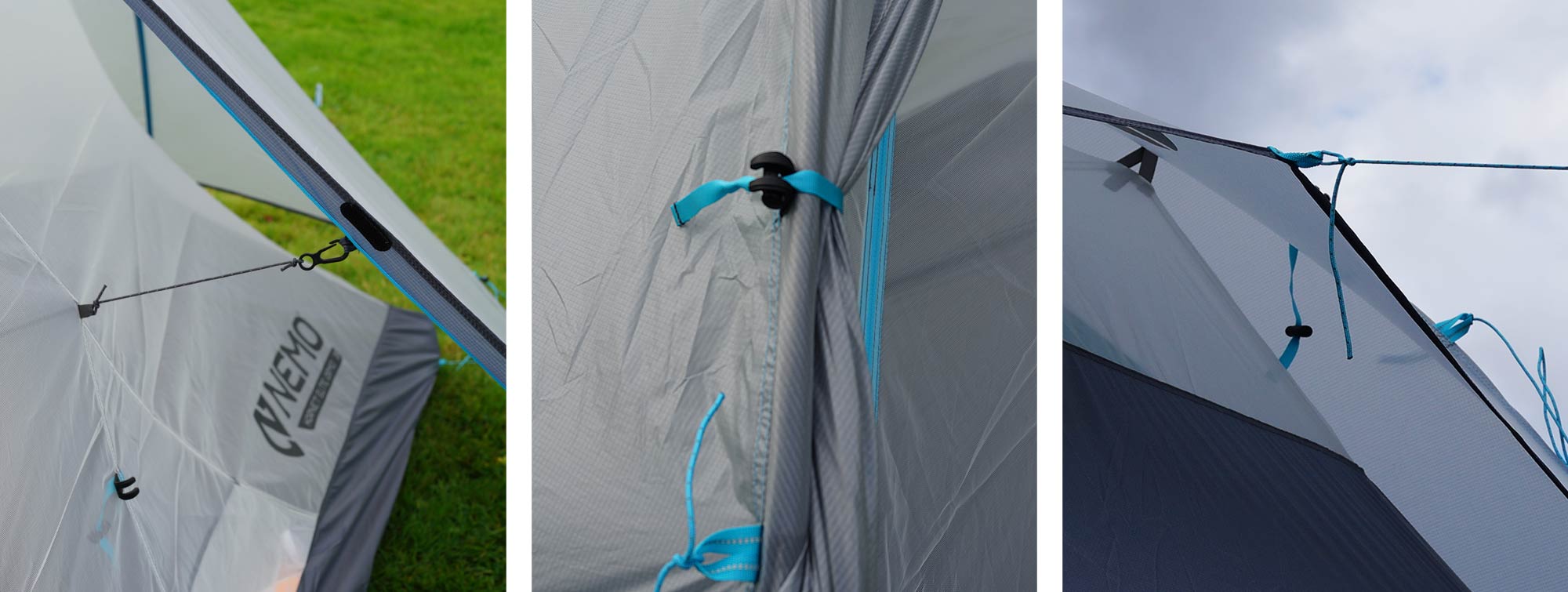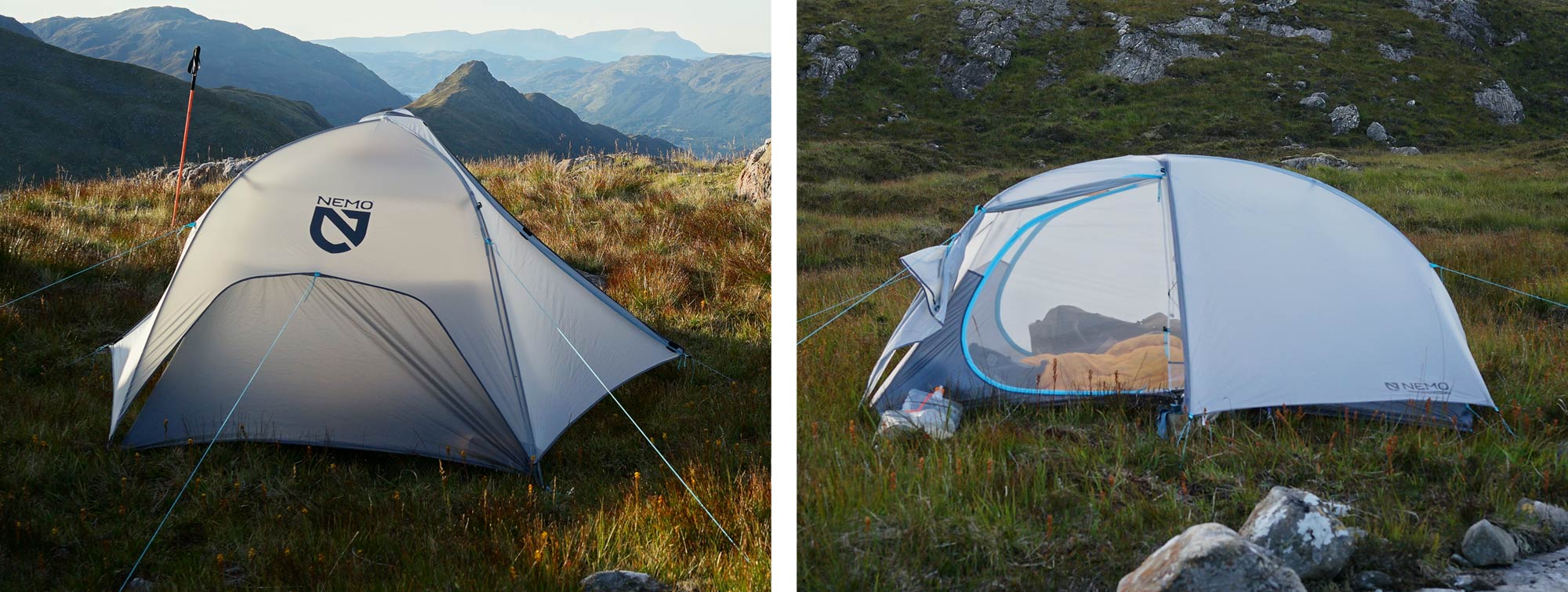Nemo Hornet Elite OSMO 1p & 2p Review - “I’ve had many a trekking holiday that this tent would have been perfect for”
Posted by Mark Richardson on Oct 18, 2022

I used the 2p version of this tent on a recent trip to Scotland, camping on the Kintail ridge in some wet and windy weather. The Hornet Elite tents are Nemo’s lightest series and as such have been designed with every aspect examined for weight and function.
The first thing that strikes you about the Hornet Elite is the high cut flysheet at one end, and in fact the flysheet is not designed to pitch all the way to the ground at any point. This doesn’t detract from protection levels inside the tent except there is a higher risk of gear stored in the porch getting wet if it’s raining hard.
This tent is about three season performance though, three season to me means you can get very wet and very windy, but not all the time and it excels at that.
OSMO Fabric
There are good videos provided by Nemo so I don’t want to write a long spiel and just repeat what’s there, I will summarise though – OSMO is a new fabric that’s a blend of Nylon and Polyester, this means it has high waterproof characteristics which it retains for longer, it doesn’t stretch as much as other tent fabrics and it’s made from recycled yarn.
Having used the tent in wind and rain I can confirm that the fabric performs well in these areas (though I can’t test longevity).

Pole Structure
The pole structure can be vulnerable in windy conditions because the single pole at the rear of the tent doesn’t prevent the flysheet being blown inwards, this type of tent needs to have additional guy lines pegged out – the guys and pegging loops are included by Nemo but not the extra pegs you need – this is typical of many tent manufacturers. Nemo also has Velcro straps to secure the flysheet to the poles for greater stability, these are important but fiddly to use.
Another option would be to use Gram-counter Gear Grip Clips to add two guys directly to the fabric at the rear of the tent, this can be done without damaging the fabric.
It was quite windy on two if the nights I camped, with rain on one of them, the tent performed very well with no water getting in and relatively minimal distortion of the tent by the wind.
Flysheet Design
The high cut-out at the head end of the tent is not to everyone’s taste and the flysheet doesn’t reach the ground when pegged out. Having used this and similar design tents in windy conditions (very windy in the case of one memorable night in Corsica) I can confirm that there’s nothing intrinsically wrong with it – it works fine.
In Scotland though, in September, on the Kintail ridge the wind was quite cold and it did breeze through the tent and mesh inner, which cooled the tent down quite quickly. Perhaps the time of year, location and conditions were towards the limit of what I’d use this tent for.
The real worry with the flysheet is the danger of gear getting wet when stored in the vestibules.

Size and Volume
With only 100g between the 2P and 1P tents I’d choose the 2P for solo use every time, not everyone would I know, because 100g is 100g! But I like a bit of space, and for one person the 2P approaches my ideal – could you get 2 people in? Of course you could, and with a vestibule and doorway for each person its eminently do-able. On the other side of the coin though it’s a small space for two people and it’s the getting dressed and undressed bit that causes issues, also its fine if you’re experiencing good weather but if you were confined to your tent for any length of time it just might get a bit tense.
The Joys of the Hornet Elite Osmo
I’ve pointed out the drawbacks with this type of tent but actually I love it – I’ve had many a trekking holiday that this tent would have been perfect for, its an amazingly low weight for a full two skin tent and its quick and easy to pitch. It has features that I love:
- Two entrances (on the 2P) and decent sized porches
- Finally an easy method of tying the doors back
- Good internal pockets on the sides and roof
- A split ring hanging from the ceiling to hang stuff from
- Fasteners to attach inner to flysheet to prevent it sagging at the sides
- Velcro straps to secure the flysheet to the pole-set for stability
- It’s an ideal ultralightweight choice for three season trips in reasonable conditions


|
||
 |
||
|
Mark Richardson |
||
|
Mark was the founder of Ultralight Outdoor Gear back in 2006 and has completed long distance backpacking routes in some of the remotest parts of the world. His favourite hikes have been Torres del Paine (full circuit), the John Muir trail and the Markha Valley trail (Ladakh, India). Although semi-retired Mark has not lost any enthusiasm for minimalist backpacking and is tackling Scotland’s Munros choosing multi-day backpacking routes over the more usual guide book excursions. |
||
